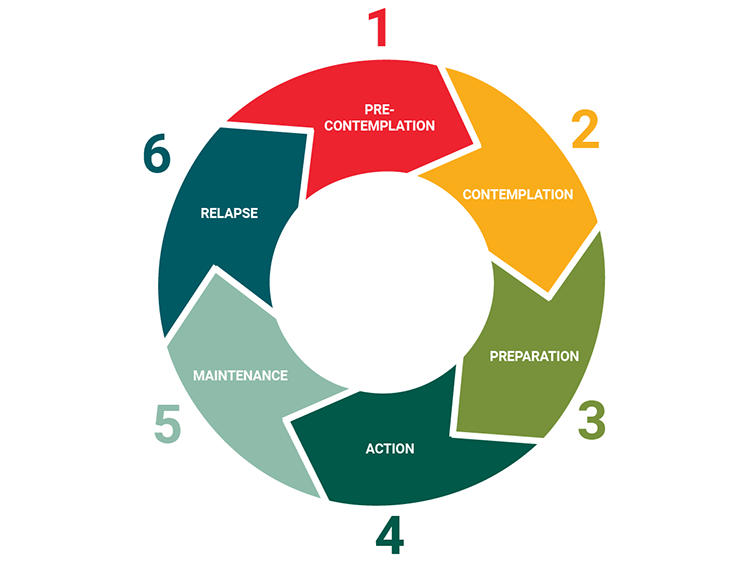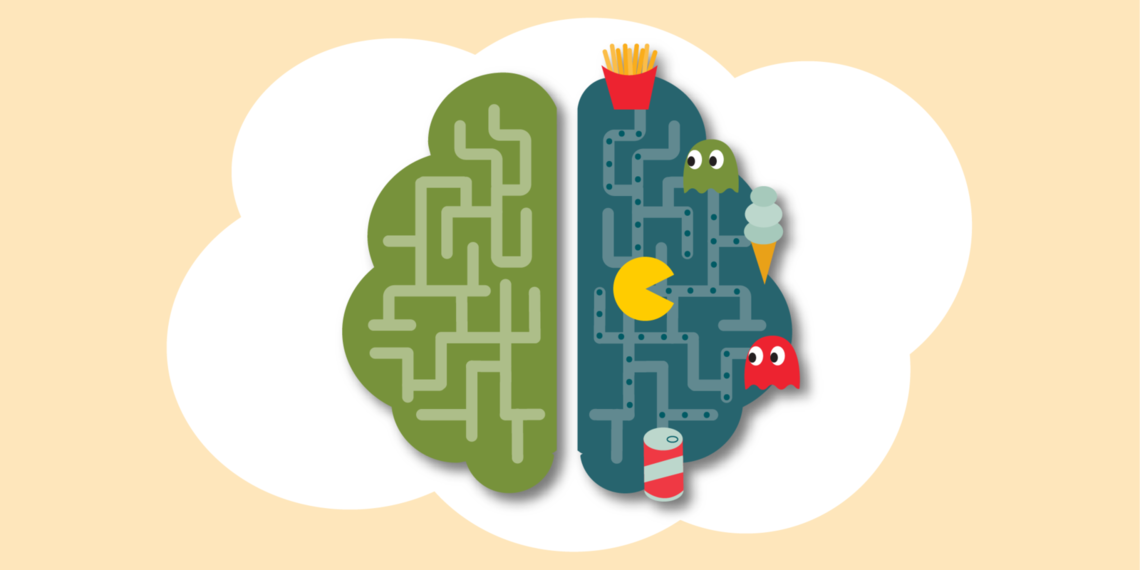Learning Objectives
After completing this lesson you will be able to:
(1) List the stages of change
(2) Identify where you are in the change process
(3) Reflect on three questions to get back into action
Case Study
Over the course of four sessions, my patient, Stacey, and I worked toward her goals of sleeping more, checking her email less and spending more quality time with her family. She successfully developed and used strategies that made her feel like she was engaging in life in a more meaningful and fulfilling manner. During a follow-up meeting one month later, Stacey expressed frustration over lapsing to her usual ways of functioning. She described staying up later than she wanted to answer email, being curt with her family, and feeling like she was never going to change. What’s going on here?
Why is behavior change so hard?
hanging a behavior, such as following through on a New Year’s resolution, is not a simple, linear process. Behavior change is complicated and complex because it requires a person to disrupt a current habit while simultaneously fostering a new, possibly unfamiliar, set of actions. This process takes time—usually longer than we prefer. Something as simple as drinking an extra cup of water a day can take an average of two months to become a consistent, habitual behavior.
In my clinical work and my own behavior change efforts, I have noticed that one of the primary influences for successful behavior change is the way setbacks and lapses are managed. We have all likely experienced the discomfort of committing to something and then not following through. It is common during these moments to be self-critical and perceive that we are not competent enough or we do not have enough willpower to achieve our goal. If we are working with someone else on a behavior change and they lapse, we might label them as lazy or stubborn. Learning how to treat these setbacks as expected moments that require reflection, compassion and problem-solving will likely increase the chances of changing a new, helpful behavior into a habit.
Why is learning how so important?
If we understand how setbacks are part of the behavior change process, we are more likely to achieve important goals—and facilitate meaningful change in others, too.
As healthcare professionals, we can educate patients on the behavior change process, identify what stage of change they are in, and better tailor interventions and resources to promote patient empowerment and action.
This is a simple framework to help you, patients and loved ones follow through with a behavior change. If interested, this is also a gateway into learning more strategies to promote change in others, such as via motivational interviewing.
How to make it stick: Be aware of the Six Stages of Change
The Transtheoretical or Stages of Change Model was originally based on results from smoking cessation research. Individuals who stopped smoking cigarettes on their own were interviewed as part of a study. Results suggested that it took study participants several attempts to quit smoking and these individuals cycled through six stages of change while trying to quit. Further research indicated that almost anyone engaging in a behavior change will cycle through these stages, including while trying to increase physical activity or wear more sunscreen.
There are six stages of change:

| Stage | What it is | See it applied |
|---|---|---|
| 1. Pre-contemplation | Unaware of need to change, no consideration of changing | “What weight gain?” |
| 2.Contemplation | State of ambivalence, thinking about change, reviewing pros and cons of change | “Wow, my pants are tight. Maybe I should do something about that… I don’t have time.” |
| 3. Preparation | Planning to change, taking steps to facilitate change behavior (e.g., finding resources, signing up for classes) | “Okay, that’s it. I’m going to the Monday night Zumba class." |
| 4. Action | Putting plans into practice (e.g., using resources, attending classes) | “Wow! I’ve been going to class for six weeks—pants fit great.” |
| 5. Maintenance | Behavior becomes part of daily life, habitual | “Todd, you would love Zumba. I go every Monday night. You should come!” |
| 6. Relapse | Return to older, unhelpful behavior patterns | “Wow! I haven’t been to Zumba in weeks! Way too busy these days…” |
Knowledge is power: Relapse is the kicker
In my work, I most frequently see individuals bounce back and forth between the stages of action, relapse and contemplation as they work toward change. When a setback occurs, I find it valuable to acknowledge the lapse as part of the change process and treat the occasion as a learning opportunity within a grand experiment. This mindset promotes flexibility, self-compassion and curiosity, which in turn facilitates problem-solving and faster return to the action stage.
Three questions to get back into action
Knowing that relapse is inevitable, it helps to have an approach to manage it. Reflecting on these three questions provides a useful strategy to get back on track:
Ask:
-
What did I learn from this setback?
-
What needs to happen to get back into action?
-
How do you want to treat yourself while working toward change?
Conclusion
After reviewing the Stages of Change Model, Stacey acknowledged that although she did not like it, this setback was an opportunity to learn more about herself. We reflected on three questions. What did Stacey want to learn from this setback? What did she need to get back into action? How did she want to treat herself during the change process? Stacey’s answers were simple: “Change isn’t going to be easy or straightforward and that’s okay. I need daily reminders on my phone to help me stay on track. I want to treat myself with patience and kindness.”
References
Prochaska, J.O., & Velicer, W.F. (1997). The transtheoretical model of health behavior change. American Journal of Health Promotion,(12), 38-48.
Resources
Creatures of Habit: How Habits Shape Who We Are–And Who We Become (Hidden Brain, NPR 2019) USC professor Wendy Wood shares insights from 30 years of study in habit formation in an engaging 51-minute podcast.
How to Make (and Keep) a New Year’s Resolution (NY Times 2018) Advice for shaping SMART resolutions: Specific, Measurable, Achievable, Relavent, and Time-bound.
*Originally published February 2020
Megan Call
With so much going on around the world and in our daily lives, our brains are constantly in overdrive. Mindfulness educator and social worker Trinh Mai explores what practitioners across U of U Health and the VA are doing to help their patients and teammates take a mental break and respond courageously in these times.
Family Medicine physician and co-director of the Resiliency Center Amy Locke outlines five ways U of U Health’s strategic commitment to well-being is paying off during COVID-19.
GME Wellness Director Rob Davies explores the practice of gratitude journaling—writing down “three good things” every day for two weeks. This simple exercise can profoundly impact your overall sense of wellbeing.
